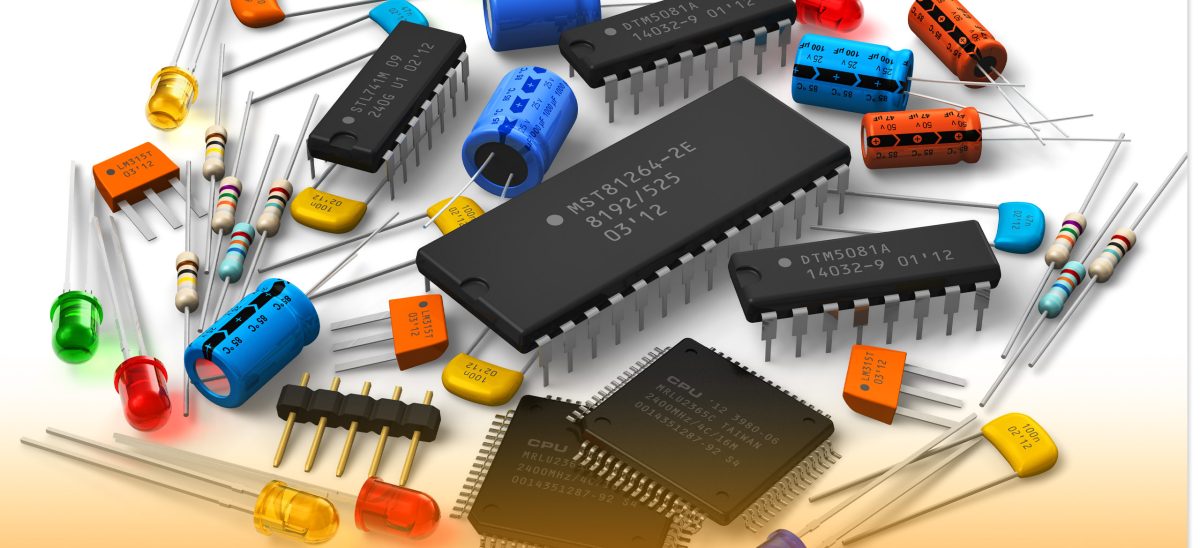Contents
What is Capacitor Polarity?
Generally, a capacitor is an electrical component having terminals with specific voltage values (either negative or positive).
The terminal voltage value determines if a capacitor is polarized or non-polarized.
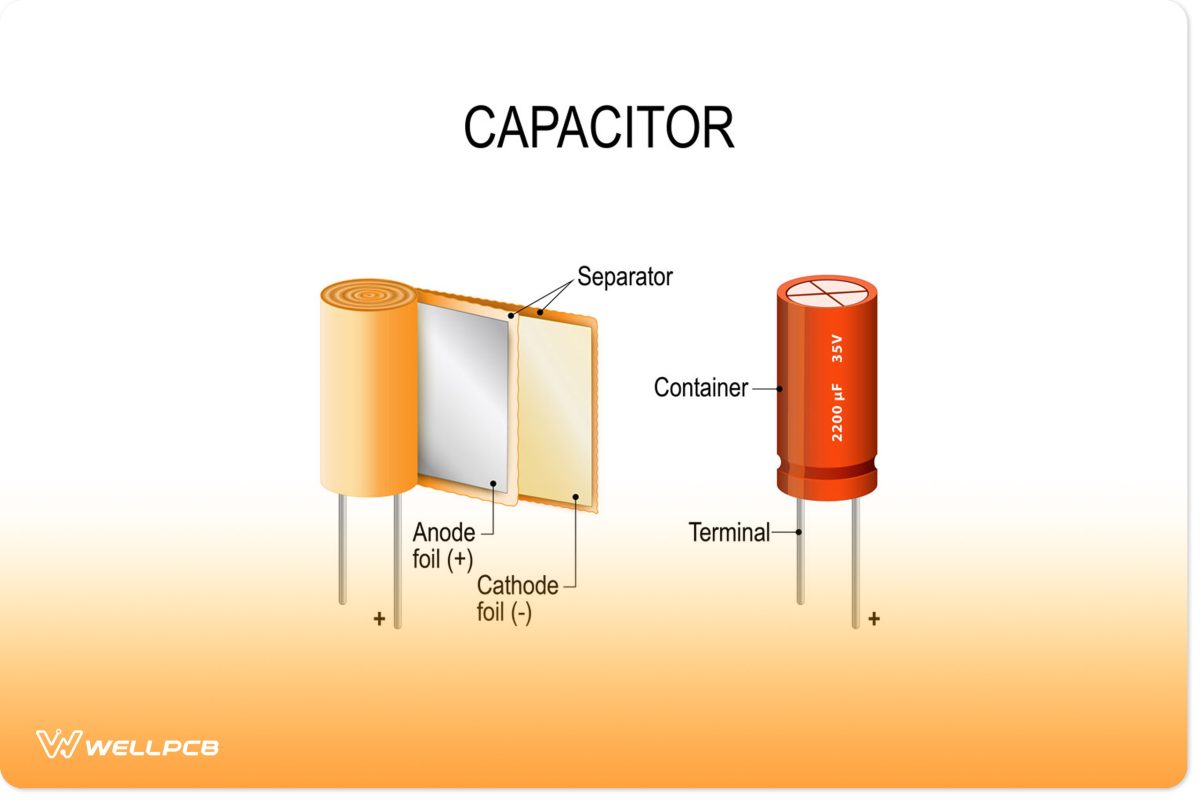
(structure of a capacitor)
Polarized capacitors differ from non-polarized in that they have their terminals classified as the cathode (-) or anode (+/positive electrode).
Also, it would be best to connect the polar capacitors based on the circuit direction, contrary to non-polarized capacitors.
Do Capacitors Have Polarity?
In this segment, we will look at the different classifications of capacitor polarity.
Non-Polarity Capacitors
Non-polarized capacitors have no specified polarity. Therefore, you can connect them in any way in a PCB.
Moreover, they can work with an AC voltage/AC. Types of capacitors include;
- Ceramic Capacitor/ Dielectric material
Manufacturers make it out of ceramic material. Also, it has a constant capacitance value. Its dielectric material limits free current flow through the capacitor.
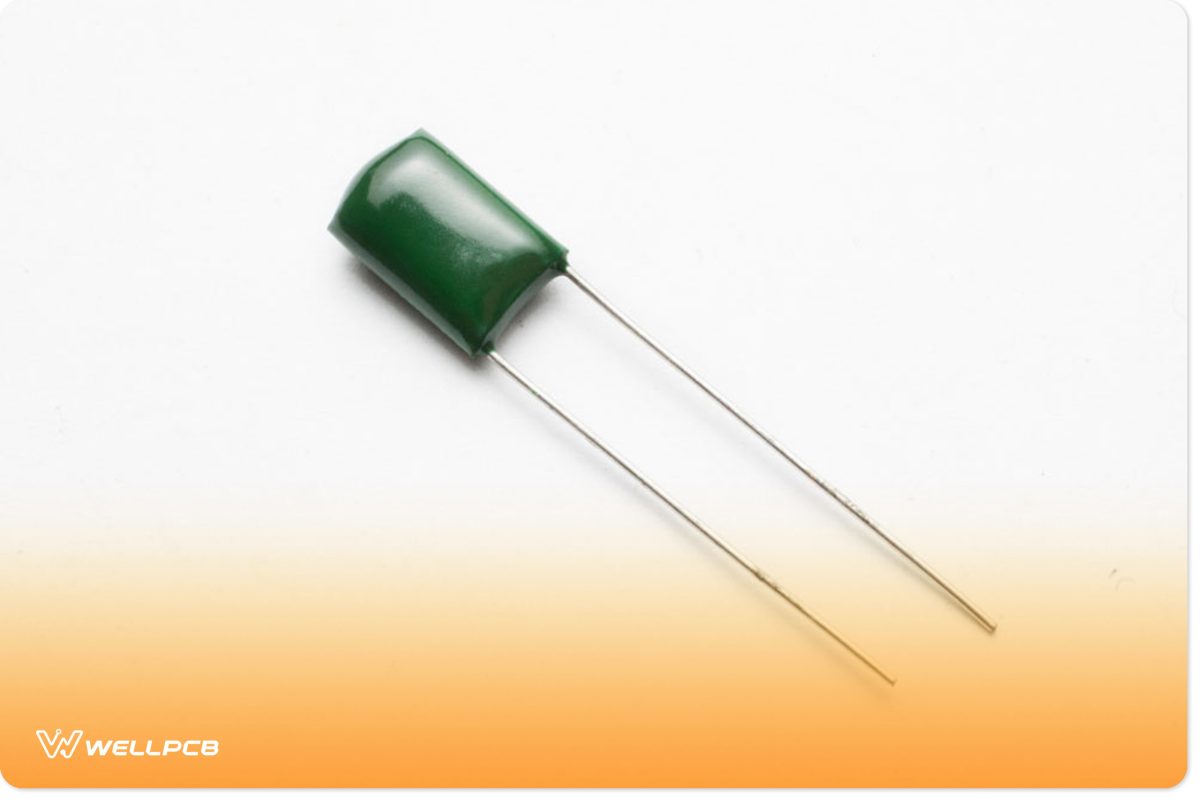
(a ceramic capacitor)
Furthermore, its structure comprises two electrodes of negative and positive polarity and alternating ceramic layers with a metal layer between them.
Also, you can classify ceramic capacitors into class1 ceramic capacitors (low losses and high stability) and class2 ceramic capacitors (high buffer efficiency).
- Film Capacitor/ Polymer film/ Plastic film/ plastic capacitor
Manufacturers construct them with two plastic films, placing metallic electrodes inside a cylindrical winding before encapsulating it.
The characteristics of capacitors here make them advantageous in their film material and construction process.
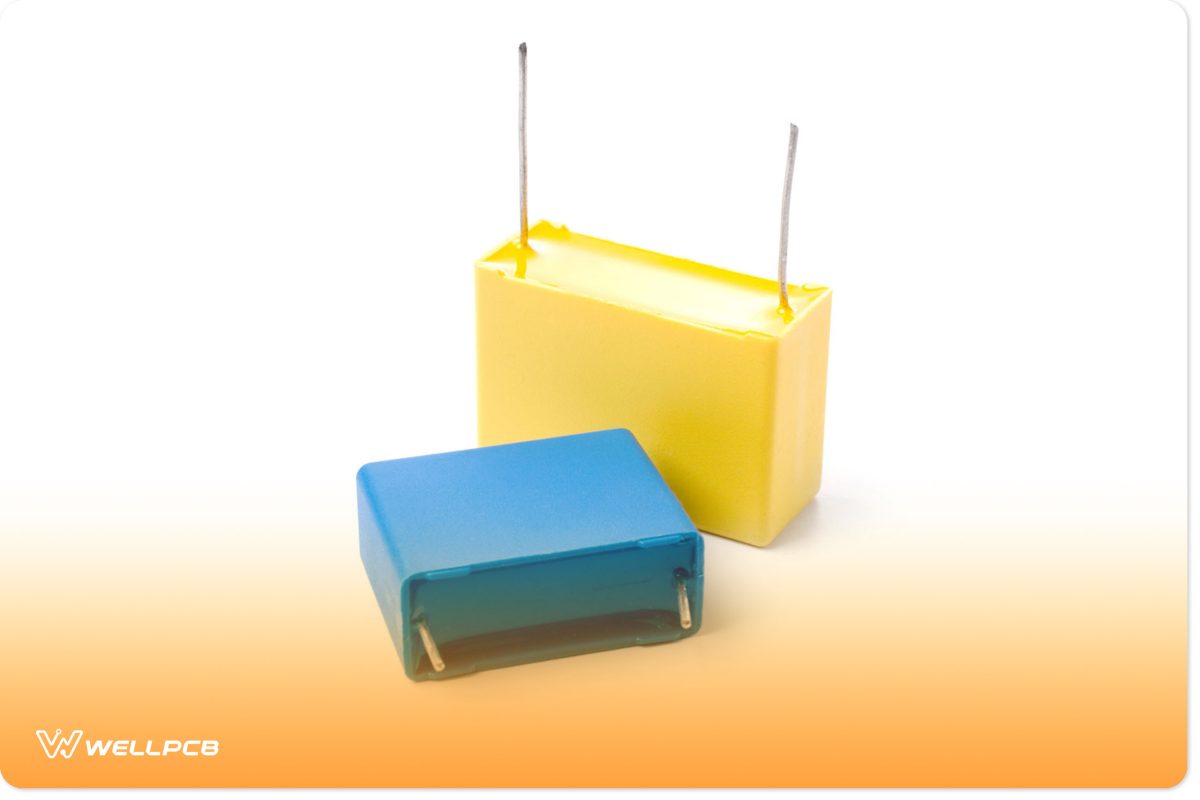
(plastic film capacitors)
Types: metalized film capacitor and metal foil capacitor.
Polarity Capacitors/ Electrolytic capacitors
Polarized capacitors have an anode and cathode. The cathode is a gel-type, liquid, or solid electrolyte surrounding the anode.
On the other hand, the anode is a metal forming anodization in a dielectric material.
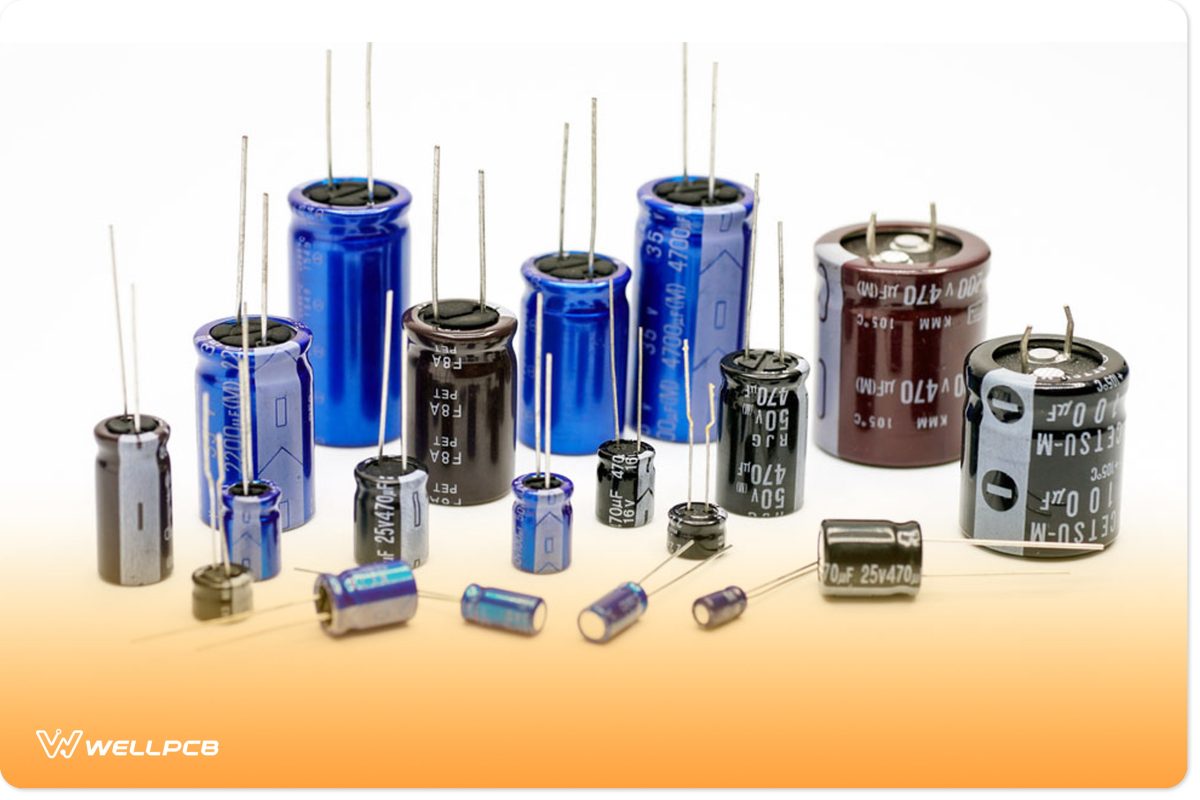
(Electrolytic capacitors)
The capacitor usually has a high capacitance-voltage value on the anode terminal because of the construction process.
The positive voltage goes through the cathode, while the negative voltage goes through the anode.
Moreover, it is an ideal capacitor for applications where the input signal stores a large amount of energy, has low leakage currents, and is of lower frequency.
They operate at higher voltages than other capacitors. However, more than 1V or 1.5 voltage ratings destroy the capacitor.
Their two modes of construction with polarity markings are;
- Aluminum electrolytic capacitor
- Tantalums electrolytic chip capacitors (dry and wet/non-solid electrolyte components)
- Electrolytic capacitors with polymer electrolytes
How to Identify the Polarity of a Polar Capacitor?
Be extremely keen when choosing a polar capacitor since their polarities vary. So, which methods can you use to identify a polar capacitor’s polarity?
Here are a few considerations;
- Visual Identification
You can visually identify a capacitor’s polarity with the following means:
The polarity of aluminum electrolytic capacitors
They are generally grey. The aluminum capacitor type also has non-identical sides with trapezoidal and right-angle corners that help identify the polarity (geometrical configuration).
Its black-colored part shows the cathode or negative pole, whereas the gray-colored side indicates the anode (positive pole).
Therefore, the pin corresponding to the trapezoidal edge represents the anode, while the pin corresponding to the right-angle base edge is the cathode.
Tantalum capacitors polarity
Polarized tantalum capacitors have negative and positive poles. Its designation is also a surface mount to fit on a circuit board, and it has a yellow color.
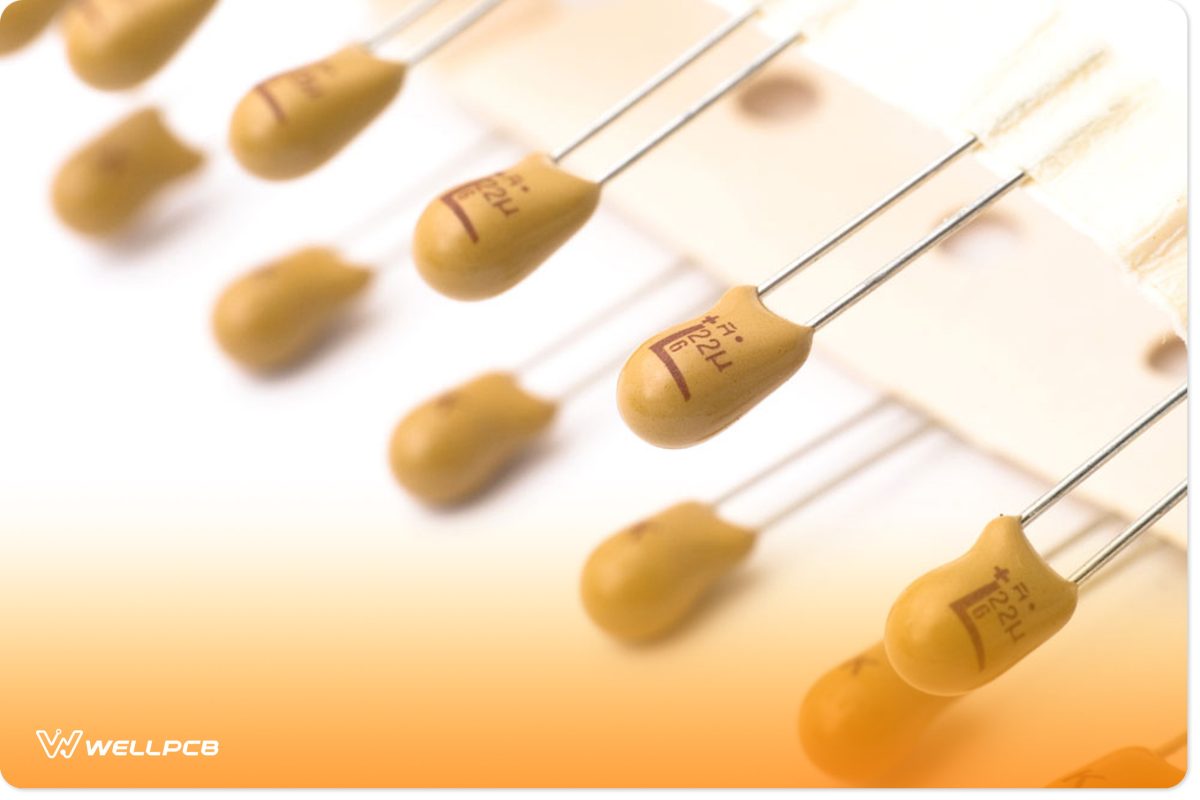
(tantalum capacitors)
Furthermore, one of its marked ends (in-dash) indicates the positive pole, making the other end a negative pole.
Radial electrolytic capacitors’ polarity
A radial electrolytic capacitor cover has a green-black or black-gray color and two pins with different lengths as a means of polarity identification.
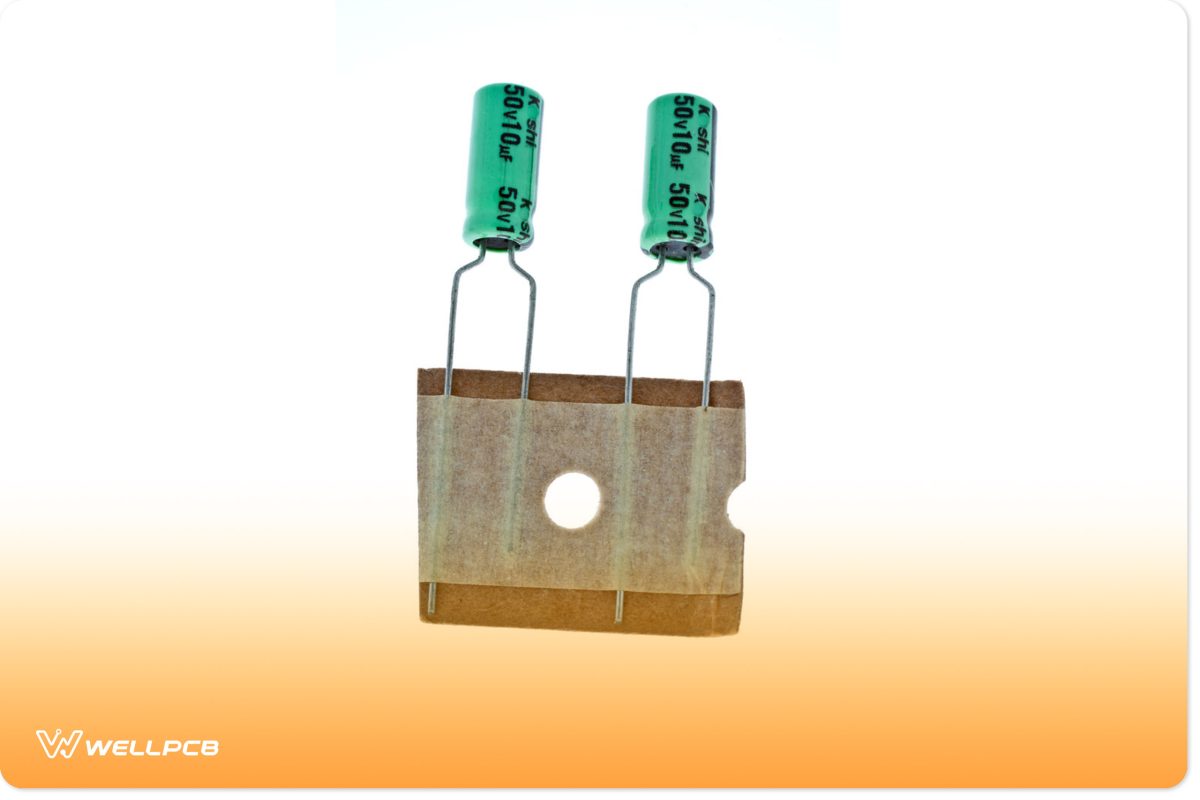
(radial electrolytic capacitors)
The shorter pin represents the cathode/negative terminal, while the longer pin displays the anode/positive terminal.
Besides, the green-black color indicates the negative pole, whereas the black-gray color represents the anode.
- Use of Multimeter
You can also use a multimeter to get precise results, in addition to knowing the polarity of a capacitor by its appearance.
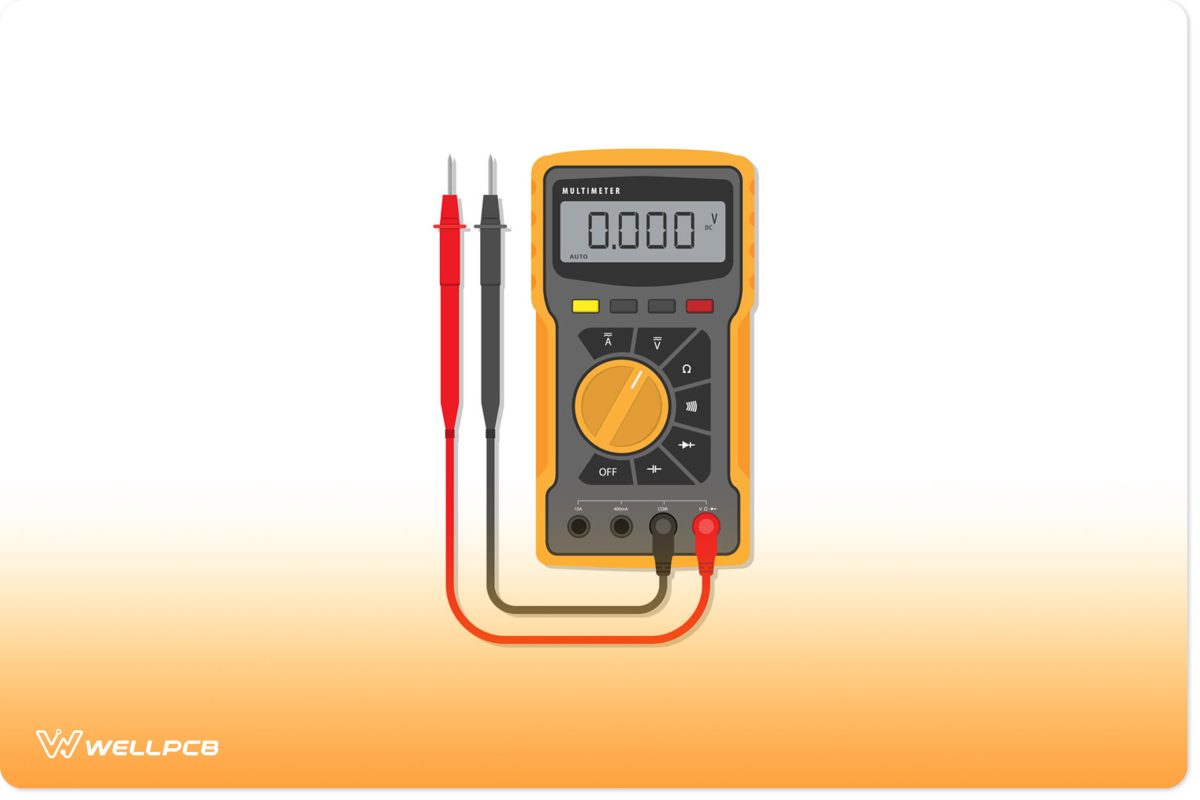
(multimeter)
Note: From the two measurements in a multimeter, the one with the highest resistant value has the pointer stopping on the left side. It indicates the anode pole connected to the black pen, while the red pen is the negative pole.
Why Does Capacitor Polarity Matter?
A capacitor polarity plays a big role in the design, circuit functionality, assembly (via physical size), and production of Printed Circuit Boards.
If you install it improperly (reverse polarity), it won’t attain the correct capacitance. In addition, the capacitor may build up internal gas pressure and cause catastrophic failure, such as minor explosions.
Also, you can replace a polarized capacitor with an equivalent non-polarized capacitor even though the reverse is impossible.
Lastly, polarized capacitors are better than non-polarized ones because they have large capacitance values in small sizes, thus occupying less space in PCBs.
Conclusion
To conclude, you can identify capacitor polarity by using a multimeter or checking its appearance.
As such, you can spot the proper poles and complete your circuit operation as required.
For more information, kindly contact us. We’ll be more than pleased to help you.
